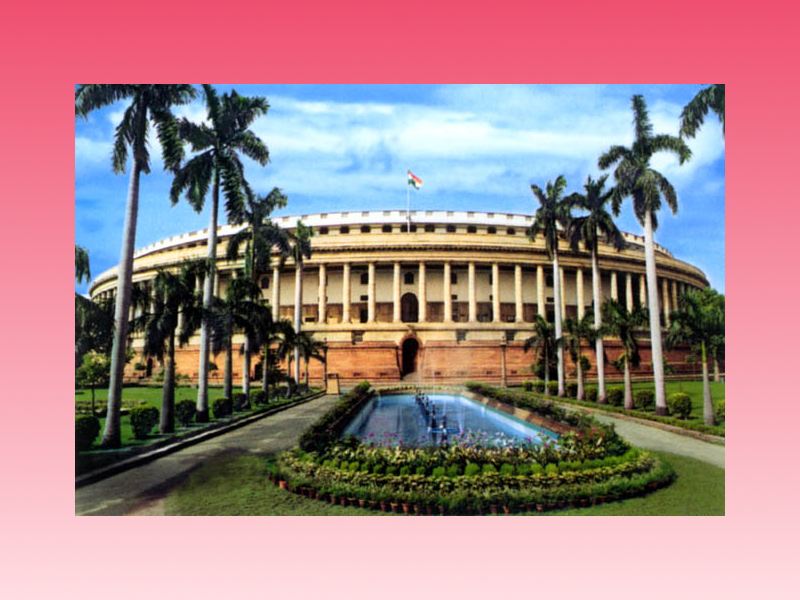By Gopa Periyadan
Except for a handful of Opposition leaders in New Delhi and a few activists across the country, no one made a professionally researched and sustained attack on Narendra Modi over the past six years to chip away at his manufactured image. The media (other than the propaganda wings of the government) is expected to expose a government’s attacks on the Indian Constitution, the sliding economy, fudging of sacrosanct data including the budget, and the ruling party’s inability to consult the Opposition on any policy. However it has generally toed the line put out by the Modi government. Hence the headline and selfie driven people on main street retain a favourable opinion of the Prime Minister and his two-member cabinet despite its foolhardy policies and inexplicable inaction. This has led to the constant drowning of opposition voices on significant issues. Where do the Opposition and the people of India go from here?
Restoring Parliamentary Democracy and the PM as First Among Equals
Over the past 73 years, our nation had several single-party majority governments. Except for a brief aberration during the emergency (1975-1977), every other government functioned according to the tenets of parliamentary democracy. The unacceptable irony of the current political situation is that the two-man government is virtually a Presidential system and the country has undergone a new baptism culturally and socially, economically and politically.
This needs to be countered politically as well as with a policy framework. The main Opposition party (the Indian National Congress) should designate a Shadow Prime Minister, and the Shadow Prime Minister should be allowed to designate a senior leader suitable for each of the key ministries. That person should have relevant experience and capabilities to formulate and announce alternate vision and policies in that ministry. This Shadow Cabinet member will be the leader in criticizing the policies of the government of the day and, at the same outlining a better vision for the people of India for the relevant ministry.
The current cabinet is run as a rubber stamp; the demonetization project was planned and executed similar to how policy is formulated in North Korea. A Shadow Cabinet constantly tail-gating this current cabinet will wake up this Cabinet and hopefully push them to do some public good. It will also be a formal check on the Prime Minister, restoring his correct place as the first among equals in the cabinet. He can also be taught that in parliamentary democracy, people vote for a Member of Parliament, a party and its policies and not for an individual claiming to know the answers to all complex problems under the government’s purview.
For this Opposition Cabinet to be effective, it needs staff, policy research staff, operating budget and communication tools. The Congress should push for a bill to formalize this structure so that any future Opposition can utilize these tools to be a true watchdog for the people of India.
Key Responsibilities of the Shadow Cabinet
The central role for this Shadow Cabinet is to organize the Opposition – create a structure to scrutinize government actions through the modern microscopes of information, efficiency, and projected success. To be effective, the Shadow Cabinet should be seen as functional. It needs to meet regularly and make recommendations on key issues the nation faces at any given time. In doing so, it should seek advice from experts. It should hold regular press conferences and disseminate key policy framework and details with Opposition Members of Parliament and party spokespersons, social media experts in the party. In Lok Sabha, Rajya Sabha, public meetings, rallies, press conferences, newspaper columns and panel discussions, Shadow Ministers have one objective: inform Indians when the Modi government is not performing well based on key metrics (GDP, NPA, Deficit, Oil Prices, MLA Purchase Index) and persuade the voters, especially the ones who had voted for the ruling party that Opposition could do way better.
Showcasing the Opposition as Talented Senior Politicians Backed by Experts
The Congress needs to change the current pattern of Rahul Gandhi waging a lone battle against Modi assisted by a couple of senior leaders joining him occasionally and shift the onus from one person to two or three dozen senior, seasoned politicians. They will regularly review policy action, or the lack of it, from the government and expose its hollowness. We also need to shift the onus of educating Indian votes from Akbar Road to state and district capitals, closer to the voters.
Shadow cabinet members from all over India will get the visibility to execute these tasks in their respective states as well. At the very least, a formal setup backed up solid research, and subject matter experts will remove the perception of opposing for the sake of whining and the image of being disorganized. It will give a clear message to the country that there is a better and bright alternative government-in-waiting. The designation as a Shadow Cabinet member raises the profile of the leader, brings her more media time and attention as well. Hopefully, this will also increase the electability of the leader in the next election. When we last checked in 2019, members of the CWC had a poor electoral track record.
Demonstrating Strong Bench Strength in Congress and Opposition Allies
For the past several decades, for all objective analysts, the Congress has a much better bench strength in talent, expert advisers as well as higher energy. Except for bad scores on ideological commitment and low discipline, the Congress appears the right party for governance. The best way to look at this is to analyze the number of transformative bills passed during the UPA era, or the number of arbitrary bills passed during the past six years under Modi rule. With the designated Shadow Cabinet positions, Congress leaders will be prepared with new policy initiatives for a future stint in government. The Congress also welcomes young professionals into the party under the All India Professional Congress (AIPC). These experts can be attached to the Shadow Cabinet and can work on several initiatives that will enhance the future of millions of Indians.
One question would be that of including allies like DMK, NCP, RJD, and many others under a banner of UPA-III? Since the Congress is unlikely to get an absolute majority any time soon, it may be better to create the UPA-III framework now with an energetic convenor and work within its structure. Some tensions with allies are inevitable and even healthy. We need to start working with them early. For all practical purposes, BJP is today in total control of all parts of the central government, Parliament, the Speaker, the Vice President, and the President. In about two years, there will be a poll for electing the next President. This large UPA-III Shadow Cabinet can keep an eye on this and try to present a consensus candidate acceptable to all its constituents.
Whether allies are included for not, a shadow cabinet will enable the Congress to present a crystal clear alternate agenda for key metrics for India. For example, what is the current mechanism in the Congress to champion a new Anti-detection Law, as the current one is reduced to a laughing-stock under a ruling party with unlimited resources? How about judicial reform policy, which has been just a phrase brought out while drafting a manifesto 45 days before national polls? Will we clean up the judicial mess?
Strengthening the Congress across States, Union Territories and Districts
The Congress, in its policies and approaches, needs to re-establish the predictability and consistency of the Nehruvian era. It can only happen if policy feedback is brought back to Delhi from hundreds of district headquarters. Today it is well known that the Congress opposes many aspects of the government’s policies. But what are the alternates? Is there a white paper on the economic initiatives from Congress if it were governing? India no longer can have a countrywide policy on many of the issues. It needs to have tailored approaches for each state or regional clusters. A shadow cabinet with broad representation can bring many ideas to the table to create suitable policy frameworks.
The constant question posed is: “what would the Congress do instead?” A response like “The personal and unprofessional behaviour of Modi-Shah is unacceptable” is not good enough. Only alternate and more compelling policy proposals would bring back enough young people and middle-class voters who have not voted for the Congress since the 2009 Lok Sabha elections.
Replacing the National Advisory Council with a Shadow Cabinet
Since the UPA-II exited, the country has not seen a single liberal progressive legislation. Almost all administrative or legislative actions piloted by the Modi government are either minor bureaucratic tweaks or trying to further their core regressive agenda of dividing Indians. The Congress need not wait for government formation to come up with a new deal for India. A shadow cabinet can formulate it while the party continues to function as an effective Opposition.
Disclaimer: The opinions expressed within this article are the personal opinions of the author. AlignIndia does not take any responsibility for the content of the article.
(Gopa Periyadan is a successful entrepreneur and an observer of technical trends, economic cycles and the political churn across the globe. All opinions expressed herein are those of the author himself, and do not represent those of his employer or any entity he is associated with.)


